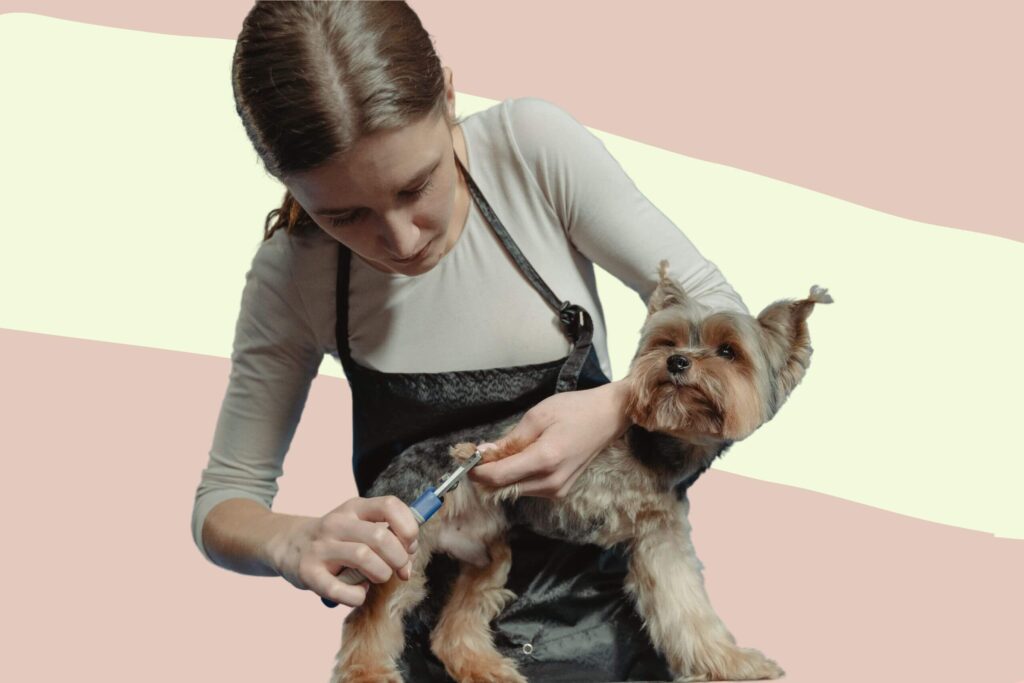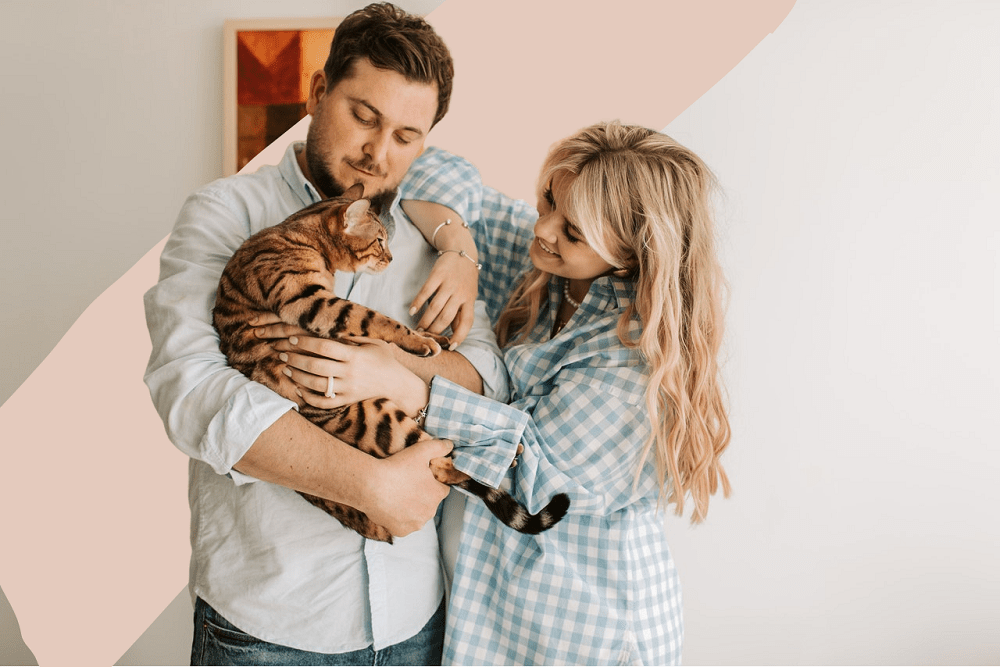Have you ever returned home to find your curtains shredded, rugs in tatters, and plants scattered across the floor? Whether you’re a new pet parent or a seasoned one, living with a furry friend can be a delightful yet chaotic experience.
From curious cats to daring dogs, our pets have a knack for getting into mischief. But fear not; with a few strategic adjustments, you can create a safe and harmonious environment for both you and your pet. Here’s how to do just that.
Create Designated Pet Areas
Pets thrive when they have their own space. Designating specific areas for your pet can help them feel secure and reduce the likelihood of them venturing into off-limits zones. By providing a dedicated area, you can also help manage their behaviour, make them feel more at home and maybe even save a bit of money on repairs!
- Pet Crates and Safety Gates: Use a pet crate to create a safe haven for your pet. Ensure it’s a place of comfort, not punishment. Alternatively, safety gates can help restrict access to certain areas when you’re not around.
- Personal Belongings: Place your pet’s bed, favourite blanket, and toys in their designated area. This helps them associate the space with comfort and security.
- Fencing: Fencing off areas, or using wireless fences are an excellent way to give your dog free roaming, but within the limits you want to place to protect your space. Most homeowners will opt for popular dog breeds to adopt into the family, so make sure you do some research on how much space they need so you can ensure they are not too confined in your home. Different dog breeds need different amounts of exercise and stimulation.

Keep Your Home Flea-Free
A flea infestation is unpleasant for both you and your pet. Regular flea treatments are essential to keep your home and pet free from these pesky parasites. Fleas can cause significant discomfort and health issues for your pet, so proactive prevention is key.
- Monthly Treatments: Use products like ITCH Flea to protect your pet and home. Regular application kills fleas, eggs, and larvae, breaking the flea life cycle at every stage.
- Clean Environment: Maintain a clean home by vacuuming regularly and washing your pet’s bedding to reduce the risk of flea infestations.
Protect Your Furniture
Pets can be tough on furniture, but with a few preventative measures, you can keep your home looking great. Protecting your furniture not only preserves its appearance but also ensures your pet’s safety.
- Furniture Covers: Use washable sofa covers to protect your furniture from fur, scratches, and accidents. These covers can be easily removed and cleaned, keeping your furniture in good condition.
- Scratching Posts and Pads: Provide your cat with scratching posts and pads to deter them from clawing at your furniture. Place these in areas where your cat likes to scratch to redirect their behaviour.
- Pet-Friendly Fabrics: Opt for pet-friendly fabrics like leather or tightly woven materials that are more resistant to scratches and easier to clean. Avoid delicate fabrics that can easily be damaged by claws or fur.
- Training and Deterrents: Train your pet to stay off certain pieces of furniture using positive reinforcement. You can also use pet-safe deterrent sprays to discourage them from jumping on or scratching your furniture.
Read: The ultimate guide to decorating your house with your pets in mind

Tidy Up & Secure Hazardous Items
Pets are naturally curious and can get into trouble if hazardous items are left within reach. Keeping your home tidy and secure is crucial. A clutter-free environment not only reduces the risk of accidents but also makes it easier to manage your pet’s behaviour.
- Choking Hazards: Small items like shoes, socks, and rubbish can be tempting for pets but pose choking risks. Store these items out of reach.
- Pet-Proof Bins: Ensure your bins are secure and inaccessible to prevent your pet from raiding them.
- Food Storage: Store pet food in airtight containers to keep it fresh and prevent pests. This also helps maintain the nutritional value of the food.
Consider Automatic Feeders
Maintaining regular feeding schedules is essential for pet health and happiness. An automatic cat feeder can be a game-changer in your pet-proofed home, especially for those with busy lifestyles or unpredictable schedules. Look for models with programmable timers, portion control settings, and secure lids to prevent clever paws from breaking in. While particularly useful for independent cats, these feeders can benefit many pets and contribute to a more harmonious household.
- Scheduled Feeding: Automatic feeders help maintain consistent mealtimes, reducing anxiety and preventing your pet from pestering you for food.
- Portion Control: These devices dispense pre-measured amounts of food, preventing overeating and helping maintain your pet’s healthy weight.
- Peace of Mind: For busy pet parents, automatic feeders ensure your furry friend never misses a meal, even when you’re running late or away from home.

Identify & Remove Toxic Hazards
Many common household items can be toxic to pets. It’s essential to identify and remove these hazards. Being aware of potential dangers and taking steps to mitigate them can prevent serious health issues for your pet.
- Cleaning Solutions: Store cleaning products in locked cabinets to prevent accidental ingestion.
- Essential Oils: Some essential oils can be harmful to pets. Avoid using them in areas where your pet spends time.
- House Plants: Research which plants are toxic to pets and ensure they are out of reach or removed from your home.
Secure Electrical Cords & Cables
Pets, especially young ones, love to chew on things, and electrical cords can be particularly tempting. Chewing on cords can lead to serious injuries or even fires, so it’s important to take steps to secure them.
- Cord Management: Use cord organisers or covers to keep electrical cords out of reach. You can also tape cords to the wall or floor to prevent your pet from accessing them.
- Unplug When Not in Use: Unplug appliances when they are not in use to reduce the risk of your pet chewing on live wires.

Install Childproof Latches
Pets can be surprisingly adept at opening cabinets and drawers. Installing childproof latches can help keep them out of trouble. This simple measure can prevent your pet from accessing dangerous items and creating a mess.
- Kitchen and Bathroom Cabinets: Use childproof latches on cabinets that contain cleaning supplies, medications, or any other hazardous items.
- Drawers: Secure drawers that contain small items or food that might attract your pet’s attention.
Embrace Positive Reinforcement
Accept that pets will make mistakes, but how you respond can make a significant difference. Positive reinforcement is key. By focusing on rewarding good behaviour, you can help your pet learn what is expected of them without causing fear or anxiety, helping everyone feel fantastic about the relationship.
- Reward Good Behaviour: Use treats and praise to reinforce good behaviour. This helps your pet understand what is expected of them.
- Avoid Punishment: Punishing your pet can lead to adverse effects. Instead, focus on redirecting their behaviour and rewarding positive actions.
The Bottom Line
Pet-proofing your home is an ongoing process that requires patience and diligence, both in the organising and the cleaning. Remember, a little effort goes a long way in ensuring a harmonious and joyful life with your furry friend. Good luck – you’re going to need it!




